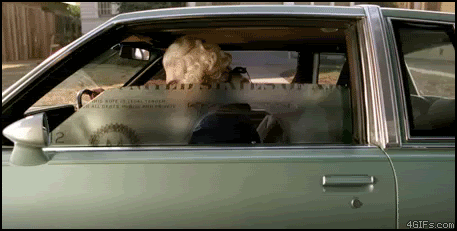As taken from:
http://www.sportcompactcarweb.com/e...c_technobabble/
PS: you can also look here:
http://www.bristoldyno.com/info/procedure.htm
Different Gears
Back in the May, 1998 Technobabble, I dyno tested a Sentra SE-R in every different gear. Second, third and fourth were very similar, but first and fifth were quite a bit lower. Testing a car in either first or fifth is a little odd, and would probably be noticed by the car owner if they were observing the test. The differences are much more significant on a turbocharged car, though, as the higher gears slow the engine's acceleration and allow the turbo to spool up earlier and stronger. If you do a second gear pull with a turbocharged car, the engine will often outrun the turbo--by the time the turbo is spinning fast enough to make boost at 3000 rpm, for example, the engine will already be going 4000 rpm; by the time the turbo is fast enough for 4000, the engine is at 5000.
This is why turbocharged cars feel so strong in higher gears when pulling up a hill, or whenever they are heavily loaded. If you compare a turbocharged pull made in second gear to a pull made in fourth, the fourth gear run will almost always be stronger. We typically dyno naturally aspirated cars in third gear, and turbocharged cars in fourth. Another difference that can occur with gearing comes when there is a 1:1 gear ratio available. Most rear-wheel drive gearboxes will have a gear that is 1:1--typically this is fourth gear, but in six-speed gearboxes it is often fifth. In the 1:1 gear in many gearboxes, power is not actually transferred through a gearset; the input and output shafts are just locked together. This eliminates the losses through the gear teeth, and results in a higher power output in that gear.
Originally Posted by 99SI







 Reply With Quote
Reply With Quote

 Nice write up, ive always wondered what the real difference was. Now we need one with type r cams.
Nice write up, ive always wondered what the real difference was. Now we need one with type r cams.















